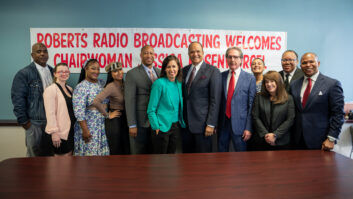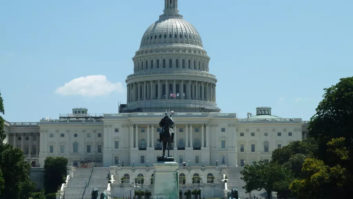The FCC has a lot of opinions to consider as it marches toward making a decision on whether to allow radio broadcasters to geo-target some content. The number of comments filed in the proceeding just keep growing.
In follow-up comments filed by two of its top executives this week, BIA Advisory Services expressed its support of the technology developed by GeoBroadcast Solutions (GBS).
Rick Ducey, managing director for BIA, told the FCC that he sees a challenging future for local radio’s over-the-air advertising service as it suffers decreasing share in a growing local ad market.
“More than half of local advertising dollars are now spent in digital media where geo-targeting is common,” Ducey wrote the FCC. “Of the sixteen local media BIA covers in its local advertising forecast, local radio and only local radio does not offer geo-targeted advertising as part of its primary service.”
Radio broadcasters can become more competitive if the FCC allows the proposed change to the FM booster rule, Ducey says.
GBS, the developer of ZoneCasting, is asking the FCC to revise its rules to allow limited origination of programming on booster signals. The proposal would allow for several minutes per broadcast hour to air unique, targeted programming to a specific geographic area.
Ducey highlights some of the benefits local radio could reap by using the technology, saying allowing radio broadcasters to geo-target over the-air programming would enhance advertising services yet not undermine the business model of radio, which is contrary to what the National Association of Broadcasters believes.
[Related: “ZoneCasting Developer Disputes NAB Claims“]
“In their digital advertising services, local radio stations and operators commonly offer data-driven audience targeting, including geo-targeting,” he wrote, “since this is something required to be competitive in the local ad market.”
Ducey, who believes changing the booster rules will be an advantage for small, and especially minority- and women-owned stations, continues: “Local radio stations and groups commonly sell geo-targeted advertising in their digital offers and have done so for years. Complementing these geo-targeted services in their over-the-air services would enhance local radio’s competitiveness.”
He also disputes NAB’s notion that GBS’s ZoneCasting technology will lead to redlining of certain parts of a radio market. The NAB believes if local radio offers geo-targeted ads it would do so in a discriminatory way, i.e., redlining, according to Ducey.
“NAB believes local radio stations would only sell geo-targeted ads serving so-called Gold Coast upscale neighborhoods and bypass neighborhoods that do not meet apparently higher SES Gold Coast metrics.
“That is contrary to the decades of experience of media companies offering geo-targeted ads across multiple local media. In an online search of business and academic literature, BIA has been unable to find any redlining issues of the type asserted by NAB documented by local media offering geo-targeted advertising. Nor does redlining make economic sense,” Ducey told the FCC.
Ducey concludes his comments: “BIA urges the FCC to consider the broader and deeper functioning of today’s modern local advertising marketplace that driven by data, targeting, audience segmentation beyond age and gender and the need for local radio to embrace technological innovation such as over-the-air geo-targeted content in order for it to become more competitive, provide more relevant content to audiences and advertisers, better serve the needs of local communities and have a new path to revenue and market share growth.”
[Related: “Lobbying Around Geo-Targeting Continues“]
In a separate letter, BIA CEO and Founder Thomas Buono told the FCC that geo-targeting would allow broadcasters to increase their inventory of advertising opportunities as well as grow over-the-air revenue.
“As we see in digital advertising and other media, geo-targeting is important in order to compete. Being able to geo-target allows advertisers to better target their ads to the most relevant audience at a lower rate than an ad serving the entire market at a full market rate.
“It also allows media management to generate a higher overall rate for the combined ads. For example, if a broadcaster charges $100 for a full market ad, but $70 each for two simultaneous ads serving different portions of the market, the advertisers and broadcaster can both benefit,” Buono commented.
Another important consideration, Buono told the FCC, is that providing geo-targeting would be optional for radio broadcasters.
“If a broadcaster does not want to offer geo-targeting, it does not have to offer geo-targeting. We believe, however, that many broadcasters, both large and small, would want to have this capability or at least the opportunity to choose for themselves whether to deploy this technology,” Buono concluded in his comments.











